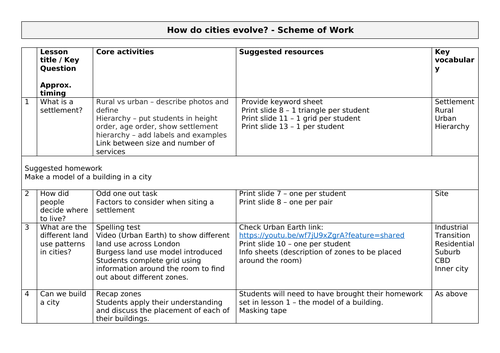





















“How do cities evolve?” is a full unit of work suitable for key stage three geography. Inside you’ll find 9 easy to follow lessons, plus homework tasks, an end of unit assessment and marking criteria.
Each lesson begins with “Do Now” style tasks helping you to settle the class. New learning is followed by independent tasks, talk and share activities and opportunities for application and reflection.
The unit also includes guidance notes and a learning journey.
Lessons included:
- What is a settlement?
- Site and situation
- Land use zones in cities
- Can we build a city? (Lesson based on homework task)
- Where should we build more houses?
- Megacities - is bigger always better?
- Living in megacities
- Can cities be sustainable?
- Re-designing urban areas (This lesson is based on the annual competition run by MEMF with further guidance notes found here: https://memf.careers/)
Homework tasks:
Create a model building for a city
Key terms to learn
Revision clock
Something went wrong, please try again later.
This resource hasn't been reviewed yet
To ensure quality for our reviews, only customers who have purchased this resource can review it
Report this resourceto let us know if it violates our terms and conditions.
Our customer service team will review your report and will be in touch.